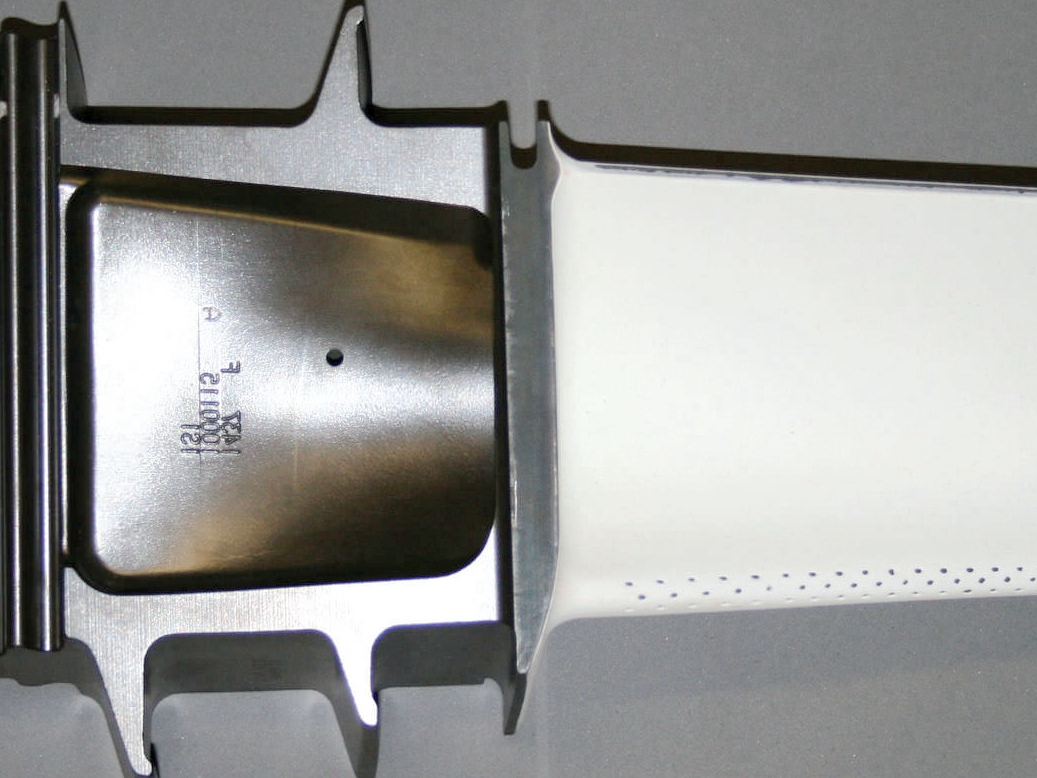The Importance of Thermal Barrier Coating for High-Temperature Applications
Introduction
Thermal Barrier Coating (TBC) is a specialized surface treatment essential for enhancing the thermal management and performance of 3D printed parts operating under extreme temperatures. Applied primarily to metal components, TBC provides a thermally insulating ceramic layer, significantly reducing heat transfer and protecting underlying structures from thermal damage. This process is extensively utilized in demanding industries, including aerospace, automotive, energy, and industrial applications, where parts must withstand temperatures ranging from 900°C to over 1200°C.
In this blog, we will delve into how thermal barrier coatings work, their specific advantages for 3D printed parts, applicable materials, and key application cases. Additionally, we will compare TBC to other surface treatments, providing clarity on when this approach offers optimal performance advantages.
How Thermal Barrier Coating Works and Quality Assessment Criteria
Thermal barrier coatings generally involve the application of a ceramic-based insulating material, such as yttria-stabilized zirconia (YSZ), onto a metal substrate through plasma spraying or electron-beam physical vapor deposition (EB-PVD). This ceramic layer provides a heat-resistant barrier that significantly reduces heat transfer, protects the substrate, and enhances the lifespan of components exposed to extremely high temperatures.
Key Quality Assessment Criteria:
Thermal Insulation Efficiency: Evaluated by thermal conductivity measurements, effective TBC systems typically achieve thermal conductivity values between 0.8–2.0 W/m·K.
Adhesion Strength: Adhesion strength between the ceramic coating and substrate is critical, assessed by standardized adhesion tests such as ASTM C633, typically requiring a bond strength exceeding 15 MPa.
Microstructure Integrity: Ensuring uniform thickness (typically 100–500 µm) and porosity control (10–20%) within the ceramic coating enhances thermal barrier performance and longevity.
Thermal Cycling Resistance: Coatings must withstand repeated temperature cycles without spalling or delamination, typically assessed through thermal cycle testing per ASTM E2368 standards.
Thermal Barrier Coating Process Flow and Key Parameter Control
The application of thermal barrier coatings involves meticulous process control:
Surface Preparation: The substrate undergoes thorough cleaning and grit blasting (Ra 3–5 µm roughness), ensuring optimal adhesion.
Bond Coat Application: A metallic bond coat (usually MCrAlY alloys) enhances adhesion and oxidation resistance.
TBC Deposition: Ceramic insulating materials, such as YSZ, are applied via plasma spraying or EB-PVD techniques, precisely controlling deposition parameters (temperature: 600–1000°C, coating thickness: 100–500 µm).
Post-Processing and Cooling: Parts undergo controlled cooling to minimize internal stresses and ensure coating integrity.
Quality Inspection: Final inspection includes non-destructive testing (NDT), thickness measurements, adhesion strength tests, and thermal conductivity evaluations to verify coating quality.
Applicable Materials and Scenarios
Thermal barrier coatings are most effective for metallic 3D printed materials regularly exposed to extreme heat. Below are common 3D printed materials suitable for TBC, with their primary applications clearly defined:
Material | Common Alloys | Applications | Industries |
|---|---|---|---|
Turbine blades, combustor liners, exhaust components | Aerospace, Energy | ||
Exhaust systems, heat exchangers | Automotive, Industrial | ||
Aerospace engine components, high-temperature valves | Aerospace, Industrial | ||
Automotive engine components, heat sinks | Automotive, Aerospace |
Thermal barrier coatings are essential for applications requiring heat management, longevity, and performance stability, particularly for metal components subjected to severe thermal loads.
Advantages and Limitations of Thermal Barrier Coating for 3D Printed Parts
Advantages:
Enhanced Thermal Insulation: Reduces substrate temperatures by up to 200°C, protecting critical components.
Increased Component Life: Extends service life of high-temperature components by minimizing thermal fatigue and oxidation.
Improved Performance: Allows components to operate at higher temperatures, improving efficiency (e.g., turbine efficiency increased by 3–5%).
Corrosion and Oxidation Protection: Ceramic barrier reduces oxidation rates significantly under thermal cycling conditions.
Limitations:
Material Compatibility: Primarily effective for metallic substrates; not suitable for polymeric or ceramic substrates.
Application Complexity: Requires precision-controlled application methods (plasma spraying, EB-PVD), increasing production complexity and cost.
Durability Concerns: Potential for coating spallation under extreme mechanical stresses or poor adhesion conditions, necessitating meticulous process control.
Thermal Barrier Coating vs. Other Surface Treatment Processes
Comparing TBC with other treatments highlights its specific benefits for high-temperature applications:
Surface Treatment | Description | Thermal Resistance | Adhesion Strength | Corrosion Resistance | Primary Applications |
|---|---|---|---|---|---|
Ceramic insulating coating | Excellent (up to 1200°C) | High (>15 MPa ASTM C633) | Excellent | Aerospace, Energy, Automotive | |
Oxide layer formation | Moderate (up to ~400°C) | High | Excellent (for aluminum alloys) | Aerospace, Automotive | |
Metallurgical enhancement process | Good (enhances substrate properties) | N/A (no coating) | Moderate to Good | Industrial, Automotive | |
Metallic layer deposition | Moderate (up to ~500°C) | High | Good | Industrial, Automotive |
Application Cases for Thermal Barrier Coated 3D Printed Parts
Thermal barrier coatings deliver tangible benefits across critical applications:
Aerospace: Coated turbine blades achieve up to 30% lifespan increase and withstand sustained operation at temperatures exceeding 1100°C.
Automotive: Engine exhaust systems with TBC reduce substrate temperatures by over 150°C, extending component durability and improving fuel efficiency.
Energy: Gas turbine combustor liners coated with TBC show enhanced thermal stability, reducing thermal fatigue and extending service intervals by up to 25%.
Industrial: High-temperature furnace components with TBC significantly reduce heat-related deformation, maintaining dimensional accuracy during operation.
FAQs
What is the primary function of thermal barrier coatings in 3D printed parts?
Which 3D printed materials benefit most from thermal barrier coatings?
How does TBC compare to other thermal protection methods?
Are thermal barrier coatings suitable for all metal parts?
How long does a thermal barrier coating last under high-temperature conditions?

